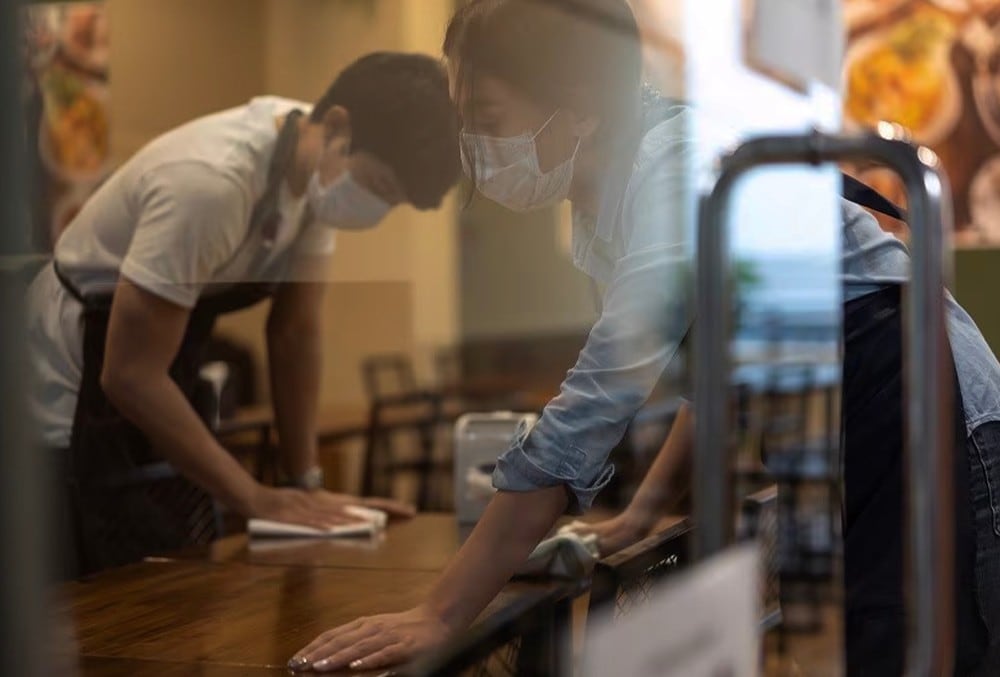Learning how to handle customer complaints is crucial for keeping diners happy and maintaining a positive reputation. One misstep can undo months of effort spent crafting the perfect menu and streamlining operations. Remember, the dining experience isn’t just about the food – it’s about how your guests feel when they walk in and when they leave. The customer remains king, and how you treat them determines whether they return or dine elsewhere.
A well-trained team can turn negative experiences into opportunities for building customer loyalty and strengthening brand trust. Equip your staff with customer complaint handling procedures that resolve issues swiftly and professionally. Here’s a go-to guide on handling customer complaints with confidence and grace.
How to Handle Customer Complaints Gracefully
No restaurant is immune to customer complaints. Whether it’s slow service, incorrect orders, or unmet expectations, every establishment will face challenging moments. The key is not to avoid complaints but to handle them in a way that reassures guests and strengthens their trust in you.
1. Give the customer your full attention.

Empathize with your customers and show that you take their complaint seriously. Avoid smiling to lighten the situation, as this may seem dismissive. Making eye contact and listening attentively reassures the customer and prevents escalation. If they are seated, crouch slightly to meet their eye level as a sign of respect.
2. Offer a sincere apology and acknowledge their concern.
Stick with the golden rule of hospitality: unless wildly unreasonable, the customer is always right. A sincere apology validates their feelings and sets the tone for resolution. Say something like, “We sincerely apologize for the delay. We understand how frustrating it can be, and we are doing our best to serve you as quickly as possible.”
3. Stay solution-oriented and offer a remedy.
Go beyond an apology and offer a concrete solution to address the issue immediately. Whether it’s waiving the bill for an incorrect order, providing a complimentary appetizer, or offering a discount for a future visit, taking quick action shows commitment to customer satisfaction.
4. Follow up to reassure the customer.
A simple follow-up can turn a disgruntled guest into a loyal patron. Express appreciation for their patience and invite them to return. A statement like, “We truly value your feedback and would love to welcome you back to experience our improved service.” can make a lasting impact.
5. Empower staff to handle complaints.

Train your staff to handle client complaints with confidence so they can resolve minor issues quickly without managerial intervention. Empower them to make sound, on-the-spot decisions to prevent unnecessary delays and avoid escalating problems. When your employees feel confident, complaints are resolved faster and more smoothly.
6. Maintain a positive attitude at all times.
Guests pick up on nonverbal cues. If a server appears irritated or defensive, it can make the situation worse. And once they answer back, expect the issue to escalate further. Encourage your staff to stay composed, professional, and accommodating, even when handling difficult customers.
7. Establish clear service recovery policies.

Having a service recovery policy ensures consistency in handling complaints. Define clear guidelines for refunds, discounts, and complimentary items:
- Refunds: Offer when a customer receives the wrong dish and opts not to reorder or when food quality is unacceptable (e.g., undercooked meat or spoiled ingredients).
- Discounts: Provide for minor inconveniences like long wait times, seating delays, or small preparation errors (e.g., missing ingredients or incorrect side dishes).
- Complimentary items: Give when a guest experiences a significant but fixable issue, such as an order mix-up that is quickly corrected or a long food delay that disrupts their dining experience.
8. Keep a log of customer complaints and solutions.
Document customer complaints and solutions to identify recurring issues and implement long-term improvements. This proactive approach reduces future complaints and streamlines your customer complaint handling procedure.
9. Use technology to improve complaint handling.
Maximize available technology to streamline your operations. Mobile ordering systems reduce errors, while customer feedback platforms allow diners to report concerns discreetly. Digital reservation systems can also reduce wait times and prevent seating-related complaints. They’re all smart investments!
10. Encourage and reward constructive feedback.
Train your staff to view complaints as opportunities for improvement. Encourage customers to share feedback through post-dining surveys or online reviews. Reward staff members who handle complaints well, reinforcing positive customer service behaviors.
Common Guest Complaints and How to Respond to Them

How you deal with client complaints can make all the difference in guest satisfaction and repeat business. Here’s how to address common issues effectively.
Slow service
Short staffing is a major challenge in the F&B industry. Speed up service by optimizing kitchen efficiency. Instead of spending six to eight hours making stock, you can use Knorr Pork Broth Base, which does the same job in five minutes. Additionally, ensure waitstaff communicate realistic wait times to manage customer expectations.
Cleanliness and sanitation issues
A dirty table or a strand of hair in a dish can ruin a dining experience. Respond immediately by replacing the item, apologizing, and reassuring guests that sanitation procedures are strictly followed. Regular hygiene training and frequent staff reminders help maintain high cleanliness standards.
Incorrect orders
Occasionally, miscommunication between your front-of-house staff and the back-of-house team can happen. Customers may be served a dish they did not order. Apologize for the mix-up and serve the correct order as soon as possible. Remember to ask your team about the incident in a debrief.
When you train your team, go beyond teaching the menu and how to speak to customers. Show them the value of teamwork and communication. These are essential for efficiency and can save you money.
Long wait times for seating
If a long queue forms outside your restaurant, your front-of-house team must engage waiting customers to keep them from leaving. Ensure the atmosphere remains welcoming; offer complimentary beverages and snacks. And be honest about estimated wait times. If seating will take 20 minutes, inform guests instead of making false promises. Also, make sure outgoing diners receive their checks promptly so new guests can be seated without unnecessary delays.
Food temperature issues
Customers expect meals to arrive at the right temperature. Serving cold food when it should be hot, or vice versa, results in complaints. Train your staff to focus on order accuracy and timing to ensure dishes reach customers fresh and at the right temperature.
Unfriendly or inattentive staff

A sour attitude from your staff can ruin a guest’s experience. A waitress greeting guests with a frown or a server giving the shortest responses when asked for recommendations can make diners feel unwelcome.
Conduct regular customer service training to ensure employees remain professional, warm, and engaging. But also, teach them limits; being too chatty or overly enthusiastic can become annoying. Encourage a guest-first mindset where staff proactively check in on diners, respond attentively, and address concerns promptly
Billing issues

Errors in billing, whether overcharging or miscalculations, can cause frustration. Ensure staff double-check bills before presenting them. Then, ask your server to also say, “Please check the bill first to make sure everything is accurate.” Address any issues immediately and ensure the corrected bill reflects the right charges and adjustments before they pay.
Mastering how to handle customer complaints takes time and practice. Allow your team to make mistakes. But teach them how to transform these into learning opportunities. Collectively deliver exceptional service to win back disgruntled guests and reinforce your restaurant’s reputation and profitability. Turn to Unilever Food Solutions for more expert tips to elevate your restaurant’s success.
